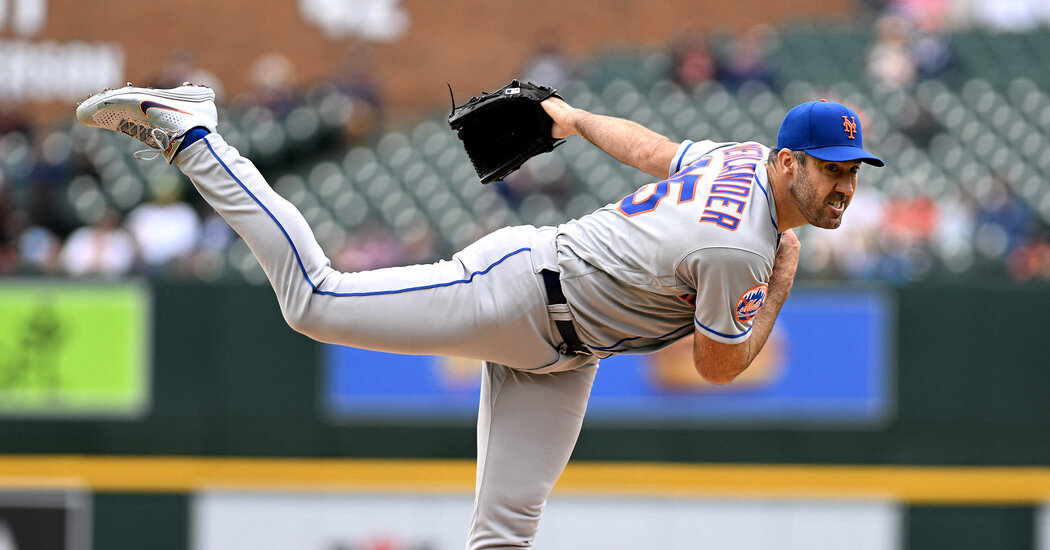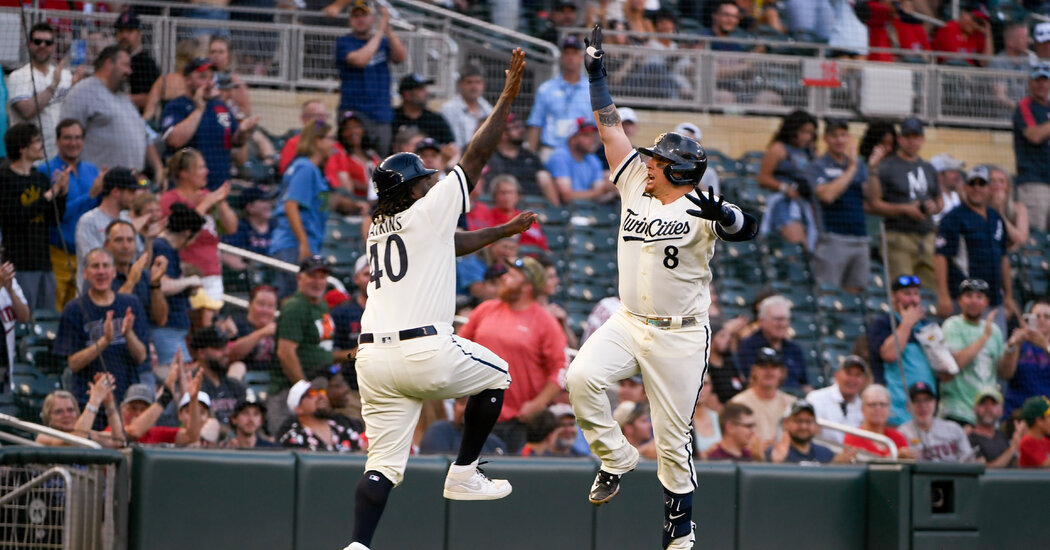Baseball’s Most Unusual Hitter Finds His Own Way
Last year, Luis Arraez spoiled Aaron Judge’s shot at a triple crown by beating him out for the American League’s batting title. This year, after being traded from the Minnesota Twins to the Miami Marlins, Arraez could join another Yankee, DJ LeMahieu, in one of the rarest distinctions in baseball: winning a batting crown in both leagues.
Arraez, a throwback hitter who emphasizes contact over power, has thus far widened the gap considerably between himself and the rest of the hitters in Major League Baseball. Arraez, who hit .316 in 2022, is hitting .398, an incredible 51 points ahead of Ronald Acuña Jr. of the Atlanta Braves, who is second in the majors at .347.
It would be easy enough to speculate that Arraez has benefited from M.L.B.’s ban on defensive shifts. But while he was in favor of making that change, he said before the season that he did not see himself as one of the batters who needed help.
“The shift was hard for a lot of hitters,” he said. “I feel good with the shift because I can hit the ball everywhere if I want. But no more shift is good for hitters.”
True to his word, he has spread the ball around, pulling 30.4 percent of his hits, having 38.3 percent go up the middle and hitting 31.3 percent the other way, according to M.L.B.’s Statcast system, making him one of only 13 batters this season to have at least 30 percent of his hits fall in each location.
Even beyond that, Arraez has developed into the most unusual hitter of this power-centric era. His 49 hits are the third most in the majors, behind Toronto’s Bo Bichette and Acuña, but 41 of them are singles. Arraez’s hard-hit rate of 20 percent — hits in which the ball travels faster than 95 miles per hour — ranks 257th out of 261 qualified batters, according to Statcast, light-years behind Toronto’s Matt Chapman, who is leading the majors at 67 percent.
Some regression to the mean is expected in seasons like this, and Arraez had a 12-game hit streak end with an 0-for-3 performance in Wednesday’s win over the Arizona Diamondbacks, dropping his May average to .298 after he hit .438 in April. But his own history and the gap he has built over Acuña give him a legitimate chance of matching LeMahieu, who won the N.L. crown with a .348 average for the Colorado Rockies in 2016 and the A.L. crown with a .364 average for the Yankees in the pandemic-shortened 2020 season.
Contrary to numerous reports that credit LeMahieu as the only person to have accomplished the feat, he already has company. Ed Delahanty won the N.L. crown by hitting .410 for the Philadelphia Phillies in 1899, and then won the A.L. crown by hitting .376 for the Washington Senators in 1902, both of which are mentioned on his Hall of Fame plaque in Cooperstown.
Some ambiguity about the 1902 A.L. title arose because sites like Baseball Reference credit Nap Lajoie with a .378 average that year. But the Elias Sports Bureau, M.L.B.’s official scorekeeper, has Lajoie at .366 and has not been provided with compelling evidence that his line should be changed. And while there was no official qualifying standard for a batting title before 1950, an argument for Lajoie as the 1902 batting champion would also lack merit as he had only 385 plate appearances, well short of the modern benchmark for a title.
For Arraez to join a list that currently has only two people on it, of course, would be a huge accomplishment, regardless of how people feel about batting average in this era. But Arraez’s lead over Acuña has the potential to put him on yet another short list. In baseball’s integrated era (1947 to the present), only one hitter, Rod Carew, has led the majors in batting average by 50 or more points in a season, which Carew did by hitting .388 for the Minnesota Twins in 1977, far ahead of the N.L.’s leader, Dave Parker of the Pirates, who hit .338.
To find the major league record for largest batting average lead, you have to go all the way back to the first officially recognized major league season, 1876, when Chicago’s Ross Barnes hit .429, 63 points ahead of Philadelphia’s George Hall.
Could Arraez get to that large of a lead? It is unlikely, but for baseball’s most unusual batter, few things seem entirely out of reach.
As for how he developed his contact-heavy approach, Arraez said it was fairly simple.
“Because I hate strikeouts,” he said. “I hate strikeouts, and I want to get on base a lot of times.”
Tyler Kepner contributed reporting.


